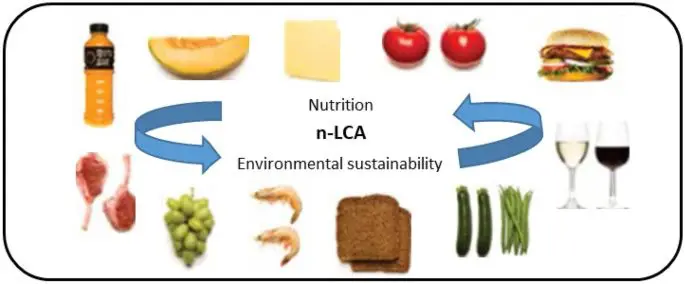Bringing nutrition and sustainability assessment together
Nutrition and sustainability are large, complex issues. They are interconnected through the food system. Food – production, distribution and consumption – impacts on greenhouse gas emissions, land and water use, and the use of fertilizers and pesticides. Consequently, there is a growing interest in the assessment methods that combine the two areas.
A recent paper discusses the pluses and minuses of the concept of nutritional life cycle assessment (n-LCA) which is the inclusion of nutrition into a LCA. For those new to this terminology, LCA is an assessment method that analyses the impact on the environment throughout the entire food production lifecycle. n-LCA expresses the environmental impact relative to the nutrient composition of foods, and is yet to be formally defined.
The author, Dr Brad Ridoutt, raises the issue of what measurement of food should be used in the n-LCA. Foods are more than just nutrients that contribute to our diet, and there “is no single function that is relevant to all foods.” For example, a food high in one nutrient may be lacking in another or satisfy the appetite more or less than another food.
The idea of using a nutrient profile score as the component in the LCA has merit as it includes multiple nutrients and overcomes the issue of using a single nutrient. However, there is a great deal of variability in these systems, such as the number and range of nutrients included, and caution is advised about making assumptions.
Nutrition as an “impact category” is proposed as an alternative approach to include in the n-LCA calculation. This considers the potential impact (beneficial or detrimental to health/disease outcome) occurring from consuming the food which would be elicited from epidemiological studies. However, the evidence from these types of studies is often weak i.e. linking a specific food intake to a health outcome is frequently confounded by many factors.
The author therefore concludes that due to the complexity of nutrition and sustainability, that the two areas have separate data, and be assessed and reported in parallel, rather than a combined integrated data approach that has many associated issues.
Reference: Ridoutt B. Bringing nutrition and life cycle assessment together (nutritional LCA): opportunities and risks Int J. if Life Cycle Assessment. 2021;26: 1932–1936. https://doi.org/10.1007/s11367-021-01982-2

